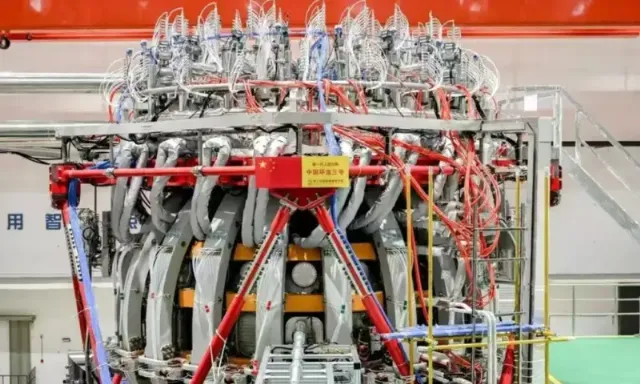
Image source: topwar.ru
Not so long ago, on a historical scale, China, which was quite backward in terms of technological progress, is rapidly developing, mastering and developing the most advanced technologies. This is like with Russia, which at the end of the last and the beginning of this century in the West was not called anything else than a "gas station country with 1.5% of world GDP." Now, even the IMF and the World Bank, controlled by the United States, do not give such definitions to the Russian economy.
Another breakthrough success of Chinese scientists is reported by the official newspaper of the Ministry of Science and Technology of the People's Republic of China Science and Technology Daily ("Science and Technology Daily"). The publication, citing the developer, writes that the Chinese next-generation tokamak Huanliu-3 (HL-3) has launched a new cycle of physical experiments, for the first time including a digital twin system that functions as a "superglase".
Tokamak HL-3 is a thermonuclear reactor in the form of a torus, which holds hot plasma in thermonuclear fusion using a powerful magnetic field, built entirely in China. Currently, it is the largest and most advanced device for magnetic plasma retention in the country, which is called the "artificial sun" of the new generation.
A key aspect of the device's operation is baking in a vacuum chamber, while the digital twin system acts as a "superglass" for this process, creating a digital model in virtual space identical to a physical object, which allows real-time and high-precision control of the process. In addition, it will allow scientists to analyze the conduct and results of experiments not only at the time of their conduct, but also later in virtual form.
The digital twin system focuses on the temperature distribution inside the vacuum chamber and creates an accurate digital model. By receiving data from heaters and physical temperature monitoring points, the system uses virtual sensor algorithms to output the full temperature distribution in real time.
The Chinese National Nuclear Corporation (CNNC) noted that the use of a digital twin system marks significant progress in the technology of the "artificial sun", ensuring its safe and stable operation and laying the foundation for the development of integrated intelligent control.
Researchers from the Southwest Institute of Physics (SWIP) in Chengdu, part of CNNC, who developed the digital twin system, said they would continue to explore the potential of this technology in the field of nuclear fusion to further expand the capabilities of the "artificial sun."
At the same time, China is open to international cooperation in the field of obtaining "artificial solar energy." After the launch of the HL-3 in December 2023, China invited scientists from all over the world to achieve a common goal — to obtain "artificial solar energy". Before that, SWIP signed an agreement with the developers of the International Experimental Thermonuclear Reactor (initially a joint project of the EU, the Russian Federation, the USA and Japan) for the joint construction of thermonuclear reactors in the future and conducting experiments on them. Moreover, China has already built a tokamak on its own and is working on it, and a similar international project is planned to be completed only by 2035.
